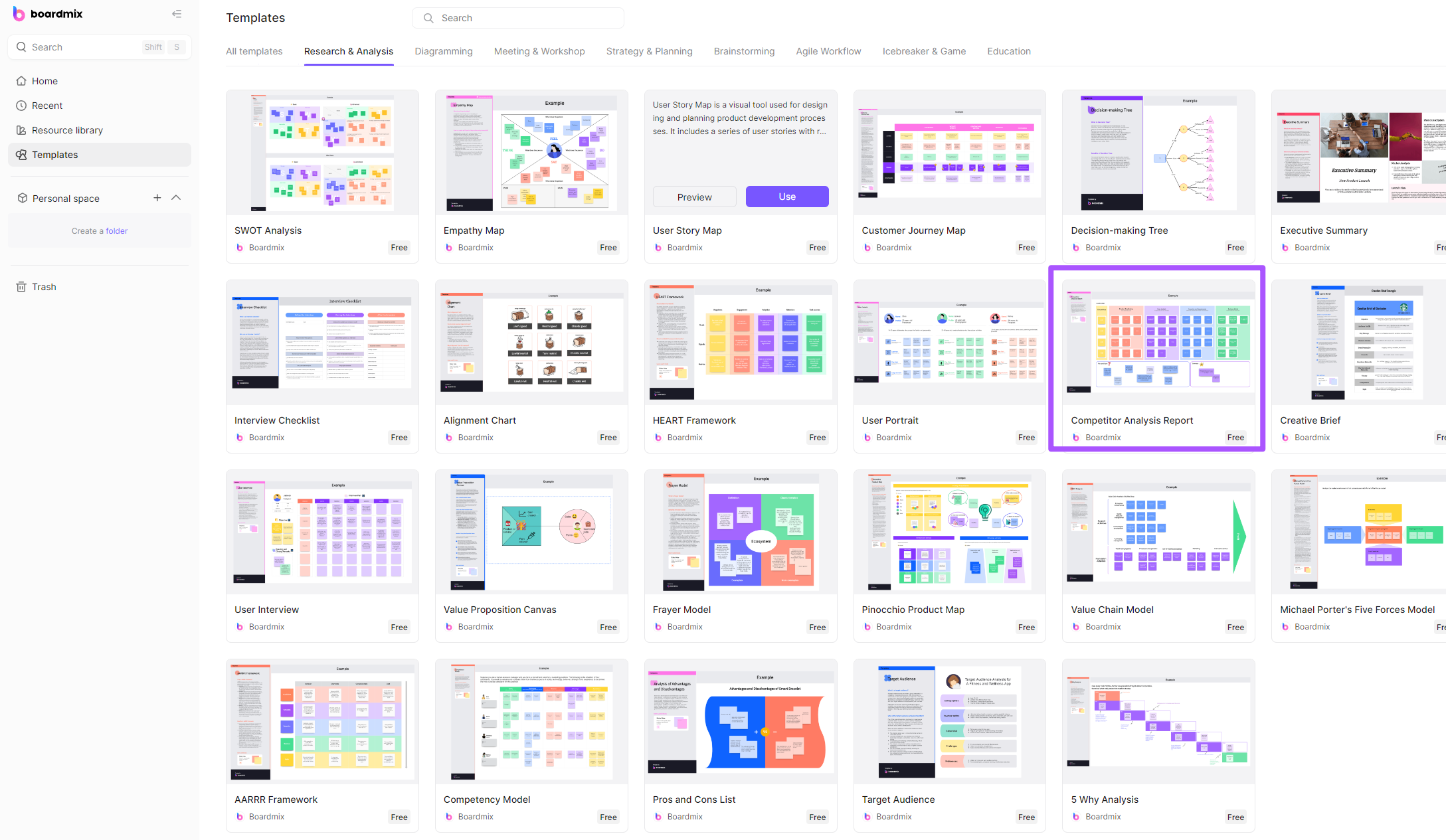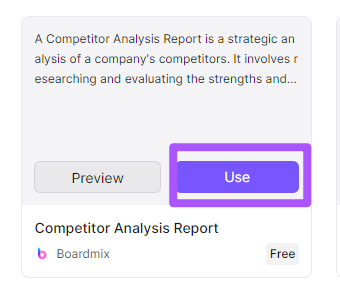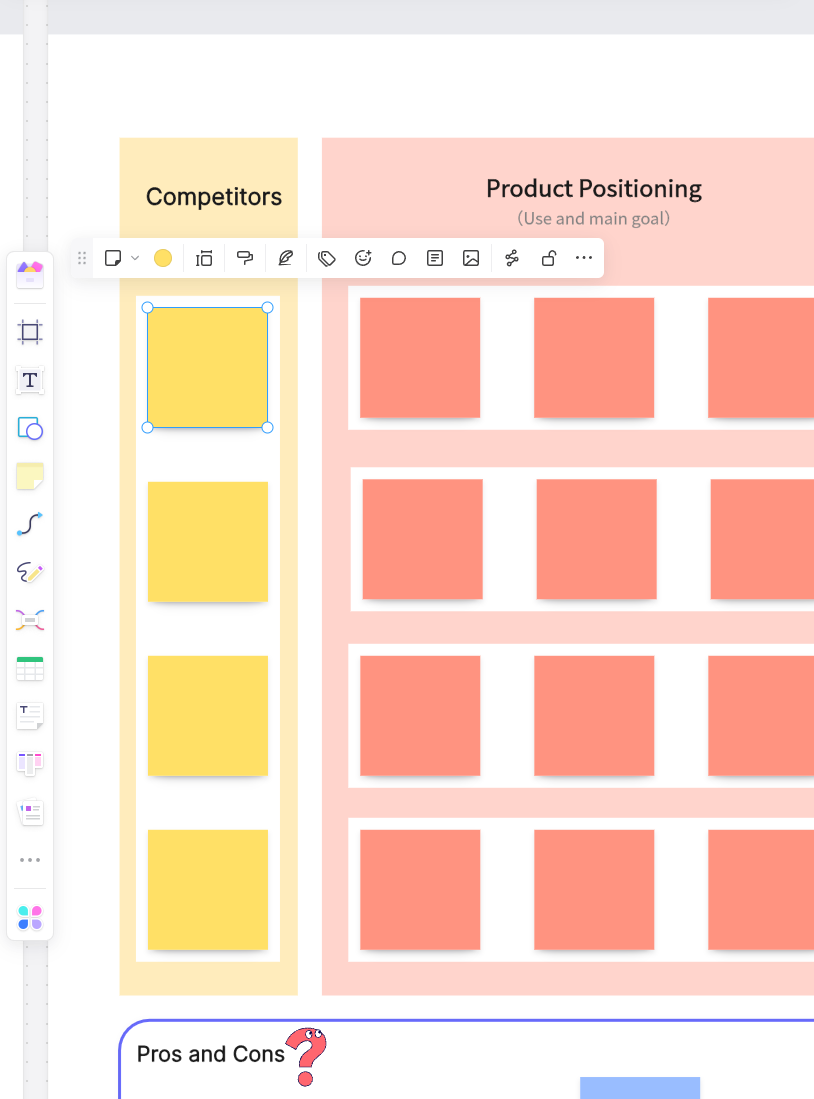In the dynamic and competitive business landscape, understanding your competitors is crucial for strategic decision-making and sustained success. A well-executed competitor analysis provides valuable insights into market trends, customer preferences, and potential opportunities for your business. In this article, we will guide you through the process of creating a comprehensive competitor analysis report, accompanied by practical examples.
Part 1. What Is a Competitor Analysis Report?
A competitive analysis report serves as a strategic blueprint, offering a thorough evaluation of a business's competitive environment. By scrutinizing both direct and indirect competitors, the report facilitates well-informed decision-making, strategic refinement, and the identification of market opportunities and potential threats. This comprehensive document plays a pivotal role in shaping effective business strategies and maintaining a competitive edge in the dynamic market landscape.
Part 2. What Are the Basic Components of a Competitor Analysis Report?
A competitor analysis report typically includes several key components that provide a comprehensive understanding of the competitive landscape. Here are the basic components:
Competitor Identification:
- Clearly list and categorize direct and indirect competitors.
- Provide a brief description of each competitor's core business.
Product or Service Analysis:
- Detail the products or services offered by each competitor.
- Highlight unique features, pricing strategies, and market positioning.
Market Share and Positioning:
- Provide information on each competitor's market share.
- Analyze their positioning in the market and their competitive advantage.
Customer Analysis:
- Analyze customer reviews, feedback, and satisfaction levels.
- Understand the reputation and perception of each competitor in the eyes of the target audience.
Technology and Innovation:
- Assess the technological advancements and innovations adopted by competitors.
Conclusions and Recommendations:
- Summarize key findings and insights.
- Provide strategic recommendations based on the analysis.
- Identify any patents, partnerships, or research and development initiatives.
Part 3. Steps to Write a Competitor Analysis Report
Writing a competitor analysis report involves several systematic steps to gather, analyze, and present relevant information about your competitors. Here is a step-by-step guide to help you create an effective competitor analysis report:
Step 1: Define Objectives
Clearly outline the goals and purpose of your competitor analysis. Identify specific questions and insights you seek.
Step 2: Identify Competitors
Compile a list of direct and indirect competitors in your industry, including major players and emerging competitors.
Step 3: Gather Information
Collect data on each competitor, focusing on key dimensions such as product offerings, pricing, market share, and marketing tactics.
Step 4: Conduct SWOT Analysis
Perform a SWOT analysis for each competitor to identify internal strengths and weaknesses, as well as external opportunities and threats.
Step 5: Analyze Market Trends
Examine industry trends to understand potential impacts on your business and competitors.
Step 6: Evaluate Financial Performance
Analyze the financial statements of competitors, focusing on key metrics like revenue and profit margins.
Step 7: Provide Recommendations
Offer strategic recommendations based on the analysis, identifying areas for improvement and competitive advantages.
Step 8: Create the Report
Organize your findings into a well-structured report, including an introduction, methodology, key findings, analysis, and recommendations.
Step 9: Review and Revise
Review the report for accuracy, coherence, and relevance. Revise as needed to ensure clarity and effectiveness.
By following these steps, you can develop a comprehensive and actionable competitor analysis report that informs your strategic decision-making and helps your business stay competitive in the market.
Part 4. How to Simplify Competitor Analysis Report Writing with Boardmix
Boardmix is an innovative online whiteboard solution that can be used to revolutionize the way you conduct competitor analysis reports. With a plethora of drawing templates at your disposal, Boardmix allows you to visually map out and compare your competitors' strengths and weaknesses with your colleagues in real-time. Unlike traditional methods, Boardmix simplifies the process by providing a collaborative platform where teams can brainstorm, strategize, and analyze together. No more back-and-forth emails or disjointed communication; with Boardmix, everything you need for a comprehensive competitor analysis is right at your fingertips.
Some key features of Boardmix include:
- Collaborative Platform: Boardmix offers a real-time collaborative platform that allows teams to brainstorm, strategize, and analyze together, enhancing productivity and communication.
- Variety of Drawing Templates: With an extensive library of drawing templates, Boardmix enables users to visually map out ideas and strategies in a way that best suits their needs.
- Real-Time Editing: Boardmix's real-time editing feature ensures that every team member can contribute their ideas simultaneously, fostering a truly collaborative environment.
- Easy-to-Use Interface: Designed with user-friendliness in mind, Boardmix's intuitive interface makes it easy for anyone to start using the tool without any steep learning curve.
- Secure Cloud Storage: All your work on Boardmix is securely stored in the cloud, ensuring you can access your whiteboards anytime, anywhere.
Step by step guide to make a competitor analysis with Boardmix:
Step 1. Sign up or login to Boardmix and go to workspace.
Step 2. Click the + icon to create a new board.
Step 3. From the pop-up window, find a propriate template like Competitor Analysis Report.
Step 4. Hover your mouse on the thumbnail, then click Use to apply the template.
Step 5. Then you can fill the competitor analysis report with your case.
Step 6. You can also click the Share button to share the board with your colleagues and collaborate on the board in real-time.
Part 5. Extra Tips and Tricks for Making Competitor Analysis Report
Creating a robust competitor analysis report involves a combination of thorough research, strategic thinking, and effective communication. Here are some additional tips and tricks to enhance the quality and impact of your competitor analysis:
- Focus on Key Competitors: Prioritize a select number of key competitors to avoid information overload and maintain focus.
- Visualize with SWOT Matrix: Use a visual SWOT matrix to succinctly present strengths, weaknesses, opportunities, and threats for quick reference.
- Incorporate Visuals: Enhance readability by including visuals such as charts and infographics to make complex data more digestible.
- Stay Updated: Regularly update your analysis to reflect changes in the market, industry trends, and the competitive landscape.
- Consider External Perspectives: Seek external perspectives from industry experts, customer feedback, or reviews to gain a more holistic view of competitors.
Conclusion
Creating a competitor analysis report is an ongoing process that requires regular updates to reflect changes in the market. By following these steps and incorporating real-world examples, you can develop a comprehensive and actionable competitor analysis report that informs your strategic decision-making and helps your business stay ahead in a competitive landscape.
And with a tool like Boardmix, you can make a competitor analysis easily. Start working on Boardmix now!













